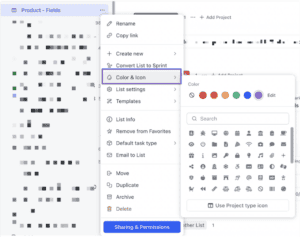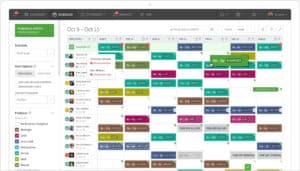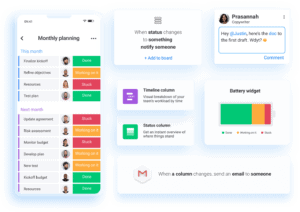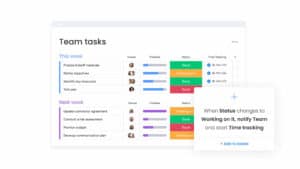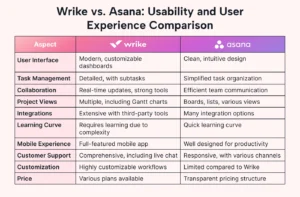Maximizing Efficiency with Job Costing: A Guide for Remote Teams
Job costing is an essential tool for managing expenses, tracking profitability, and ensuring that projects stay within budget. As teams become increasingly remote, keeping track of individual project costs and resource allocation becomes more complex but also more crucial. In this article, we’ll explore the fundamentals of job costing, its benefits for businesses, and practical tips to implement an effective job costing system, particularly for remote teams.
Job costing allows managers to assign specific costs to individual jobs or projects, providing detailed insights into expenses such as labor, materials, and overhead. By utilizing job costing software and methods, businesses can track costs in real-time, making it easier to assess profitability, optimize resources, and improve operational efficiency.
Why Job Costing Matters for Your Business
Job costing is essential for businesses that manage multiple projects with varying scopes. Whether you’re running a marketing agency, construction firm, or tech startup, tracking the cost of labor and materials on a per-project basis ensures that you’re not over- or under-billing your clients. It also provides insight into which projects are most profitable and where resources are being used inefficiently.
For remote teams, job costing plays an even more critical role. Without direct oversight in an office environment, it can be challenging to ensure that employees are allocating their time and resources appropriately. With job costing software, remote teams can accurately track time spent on tasks, materials used, and other project-related expenses.
Benefits of Job Costing for Remote Teams
1. Accurate Budget Tracking
Job costing gives remote teams real-time insights into how much has been spent on each project. This allows businesses to monitor progress and stay within budget, ensuring that project managers can take action before expenses get out of control.
2. Improved Resource Allocation
Knowing the exact cost of labor and materials for each job allows businesses to allocate resources more efficiently. If a project is over budget, teams can reassign resources to higher-priority jobs, preventing waste and boosting profitability.
3. Enhanced Profitability
By understanding the true cost of each job, businesses can ensure they are charging appropriately. Job costing helps identify which projects are most profitable, allowing companies to focus on high-value clients and services.
4. Greater Transparency
With job costing software, remote team members can input their hours worked, materials used, and other costs in real time. This transparency makes it easier to assess project progress and ensures accountability among employees.
5. Simplified Invoicing
Job costing systems generate detailed reports that can easily be converted into client invoices. By automatically tracking all job-related expenses, businesses can generate accurate, itemized invoices, reducing the likelihood of billing errors.
Implementing Job Costing in Remote Teams
1. Choose the Right Job Costing Software
The first step in implementing a job costing system for remote teams is choosing the right software. Look for software that integrates with your existing tools (such as project management and time tracking systems) and provides real-time insights into project costs.
- Recommended Tools:
- QuickBooks: A powerful accounting tool with job costing features that allow you to track project costs and profitability.
- Xero: Offers project tracking and job costing solutions for small to medium-sized businesses.
- Zoho Projects: Includes built-in job costing features for project management and financial tracking.
2. Set Up Job Categories
To track expenses accurately, you need to set up categories for each type of job cost. Typical categories include labor, materials, overhead, and subcontractor costs. These categories can be customized depending on your industry or specific needs.
- Tip: Ensure that remote team members understand how to categorize expenses properly to avoid confusion and inaccurate reporting.
3. Track Labor Costs
Remote teams must accurately track their time to ensure labor costs are correctly allocated to each project. Time tracking tools such as Harvest, Toggl, or Time Doctor can help employees record the hours they spend on each job. These tools integrate seamlessly with job costing software, allowing you to match labor costs with specific projects.
- Tip: Make sure team members regularly update their time logs to avoid discrepancies in reporting.
4. Monitor Overhead Costs
Overhead costs, such as software subscriptions, office supplies, and utilities, should also be factored into the total cost of each job. For remote teams, overhead might also include costs related to communication tools, cloud storage, or other resources necessary to facilitate remote work.
5. Regularly Review Job Costing Reports
Job costing reports provide critical insights into the financial health of each project. Schedule regular reviews of these reports to assess whether your team is staying within budget, hitting profitability targets, and using resources efficiently.
Conclusion: Empower Your Remote Team with Job Costing
Job costing is a vital tool for businesses looking to optimize their project management, particularly for remote teams. By accurately tracking labor, materials, and overhead costs, businesses can ensure that projects remain profitable and that resources are allocated efficiently. Implementing a job costing system not only provides transparency and accountability but also helps businesses make data-driven decisions to boost overall profitability.
FAQs
What is job costing?
Job costing is a method of tracking expenses—such as labor, materials, and overhead—associated with specific jobs or projects. This allows businesses to monitor profitability and ensure they are staying within budget.
Why is job costing important for remote teams?
For remote teams, job costing ensures that project expenses are tracked accurately, even when team members aren’t working in the same location. This helps with accountability, resource allocation, and budget management.
What tools can I use for job costing?
Tools like QuickBooks, Xero, and Zoho Projects offer job costing features that help track project expenses and profitability. Time tracking tools like Toggl or Time Doctor can also be used to track labor costs.
How can I ensure accurate job costing in a remote team?
Implement job costing software that integrates with time tracking and project management tools. Ensure that all team members regularly update their time logs and input expenses accurately.
How does job costing improve profitability?
Job costing provides insights into the true cost of each job or project, allowing businesses to charge clients accurately, avoid waste, and focus on the most profitable services.
Top Tools to Simplify and Scale Your Business
QuickBooks
QuickBooks is a leading accounting software that offers job costing features. It helps you track project expenses, profitability, and billable hours, providing detailed financial insights.
Xero
Xero’s project tracking feature allows businesses to manage job costs efficiently. It integrates with your financials to give real-time updates on job expenses and profitability.
Zoho Projects
Zoho Projects offers robust job costing features integrated with project management tools. It helps remote teams track costs and monitor project progress.
Harvest
Harvest is a popular time tracking tool that integrates with job costing software, making it easy for remote teams to track labor costs accurately.
Time Doctor
Time Doctor offers advanced time tracking features for remote teams. It ensures accurate labor cost tracking, making it easy to match labor expenses with specific projects.
Keywords:
job costing, remote team management, project profitability, time tracking tools, job cost tracking, labor cost tracking, project budgeting, QuickBooks job costing, Xero job costing



